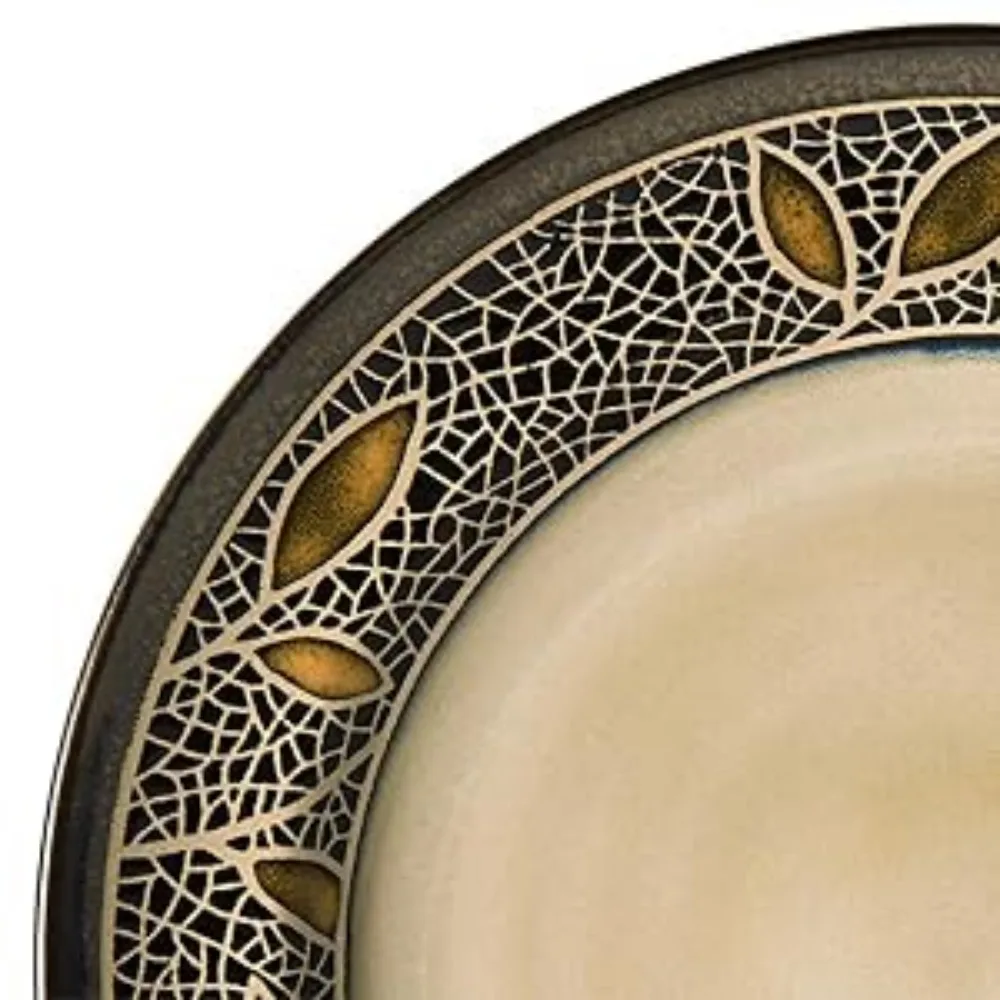
Asian plates are not just functional items; they are pieces of art that bring a touch of elegance, culture, and tradition to any dining experience. Whether you’re looking for the perfect gift, enhancing your own dining collection, or setting the stage for a special occasion, these offer a blend of beauty and practicality. This comprehensive guide will explore the different types of it, their cultural significance, styling tips, and how to choose the perfect set for any occasion.
The Cultural Significance of Asian Plates
These are deeply rooted in the rich culinary traditions of Asia, each style reflecting the unique aesthetics, craftsmanship, and dining customs of the region it originates from. These plates are often adorned with intricate patterns, motifs, and designs that symbolize prosperity, good fortune, and harmony.
Benefits of Asian Plates:
- Artistic Expression: These often feature beautiful, intricate designs that can serve as conversation pieces in any dining setting.
- Cultural Connection: Owning and using these plates allows you to connect with and appreciate the rich cultural heritage of Asia.
- Versatility: Suitable for both everyday use and special occasions, they add a touch of elegance to any meal.
Types of Asian Plates
Asian plates come in various styles, each representing different regions and cultural traditions. Here are some of the most popular types:
1. Japanese Plates
Japanese plates are known for their minimalist design, subtle colors, and attention to detail. They often reflect the concept of “wabi-sabi,” which celebrates imperfection and transience.
- Materials: Typically made from porcelain, stoneware, or ceramic.
- Designs: Includes simple, elegant patterns often featuring natural elements like flowers, leaves, or bamboo.
- Best For: Sushi, sashimi, and other delicate dishes.
2. Chinese Plates
Chinese plates are often bold and vibrant, reflecting the rich cultural heritage of China. These plates are frequently adorned with intricate patterns, dragons, phoenixes, and other symbols of luck and prosperity.
- Materials: Commonly made from porcelain, bone china, or ceramic.
- Designs: Includes motifs like dragons, flowers, and traditional Chinese landscapes, often in red, blue, and gold hues.
- Best For: Serving traditional Chinese dishes like dim sum, stir-fries, and noodles.
3. Korean Plates
Korean plates are characterized by their elegant simplicity and muted colors. They often have a rustic, handmade feel, with natural textures and finishes.
- Materials: Often made from stoneware, ceramic, or porcelain.
- Designs: Features simple patterns, sometimes with traditional Korean motifs or calligraphy.
- Best For: Serving Korean BBQ, kimchi, and rice dishes.
4. Thai Plates
Thai plates are colorful and vibrant, often featuring intricate floral designs and traditional Thai patterns. They reflect the lively and dynamic culture of Thailand.
- Materials: Typically made from ceramic or porcelain.
- Designs: Includes elaborate floral patterns and motifs inspired by Thai temples and traditional art.
- Best For: Serving Thai curries, salads, and rice dishes.
5. Vietnamese Plates
Vietnamese plates are known for their delicate designs and pastel colors. They often feature hand-painted motifs that reflect the natural beauty of Vietnam.
- Materials: Commonly made from ceramic or porcelain.
- Designs: Features soft, hand-painted patterns, often depicting flowers, birds, or rural landscapes.
- Best For: Serving Vietnamese spring rolls, pho, and other traditional dishes.
How to Style a Table with Asian Plates
Styling a table with Asian plates involves balancing tradition with contemporary elements to create a dining experience that is both elegant and inviting. Here are some tips for styling your table:
1. Mix and Match
- Combine Styles: Don’t be afraid to mix different styles to create a dynamic and eclectic table setting.
- Layering: Use different sizes and shapes of plates to create depth and interest on the table.
2. Complement with Tableware
- Chopsticks and Utensils: Pair your Asian plates with traditional utensils like chopsticks or bamboo spoons for an authentic dining experience.
- Serving Dishes: Complement the plates with matching serving bowls, platters, and dipping sauce dishes.
3. Use Coordinating Linens
- Tablecloths and Runners: Choose table linens in colors that complement the patterns and designs of your plates.
- Napkins: Use coordinating napkins to tie the whole look together.
4. Incorporate Natural Elements
- Floral Arrangements: Use fresh flowers or bamboo arrangements as centerpieces to enhance the natural beauty of your table setting.
- Wooden Accents: Incorporate wooden or bamboo placemats and coasters to add warmth and texture.
5. Consider the Occasion
- Casual Dining: For everyday meals, opt for simpler designs and more relaxed table settings.
- Special Occasions: For festive or formal events, use more elaborate plates and add decorative elements like candles or ornate centerpieces.
Choosing the Perfect Asian Plates
1. Consider the Material
The material of the plates affects their durability, appearance, and suitability for different types of food.
- Porcelain: Elegant and durable, ideal for formal dining.
- Ceramic: Versatile and available in a wide range of designs, suitable for both casual and formal settings.
- Stoneware: Rustic and durable, perfect for everyday use.
2. Match the Style
Select plates that complement your existing tableware or the overall theme of your dining area.
- Traditional: Choose plates with classic patterns and motifs if you prefer a traditional aesthetic.
- Modern: Opt for minimalist designs with clean lines if your style is more contemporary.
3. Consider the Size and Shape
Different dishes may require different plate sizes and shapes.
- Small Plates: Ideal for appetizers, side dishes, or desserts.
- Large Plates: Perfect for main courses or sharing platters.
- Square or Rectangular Plates: Great for serving sushi, sashimi, or other neatly arranged dishes.
4. Reflect on the Occasion
Consider the event or setting where you will use the plates.
- Everyday Use: Choose durable and easy-to-clean plates for daily meals.
- Special Occasions: Opt for more elaborate and decorative plates for festive or formal gatherings.
5. Think About Maintenance
- Dishwasher Safe: Ensure the plates are dishwasher safe if you want easy cleanup.
- Microwave Safe: Check if the plates are microwave safe, especially if you plan to use them for reheating food.
Gift Ideas Featuring Asian Plates
These make thoughtful and elegant gifts for various occasions. Here are some ideas for incorporating them into your gift-giving:
1. Complete Dinnerware Sets
- Matching Sets: Gift a complete set of matching Asian plates, including dinner plates, side plates, and bowls.
- Themed Sets: Choose a theme, such as Japanese sushi plates or Chinese dim sum plates, and gift a coordinated set.
2. Personalized Gifts
- Custom Designs: Order custom plates with personalized designs or messages for a unique and thoughtful gift.
- Monogrammed Plates: Choose plates with monogrammed details for a personal touch.
3. Practical Gifts
- Versatile Plates: Select plates that can be used for various types of cuisine and dining settings.
- Gift Bundles: Combine the plates with matching chopsticks, napkins, or a bottle of sake for a complete gift set.
4. Special Occasions
- Housewarming Gifts: Asian plates make excellent housewarming gifts, offering both functionality and beauty.
- Wedding Gifts: Gift a set of elegant plates to newlyweds as a symbol of prosperity and good fortune.
Caring for Asian Plates
Proper care and maintenance are essential to keep Asian plates looking beautiful and lasting for years.
1. Cleaning
- Hand Washing: Hand wash delicate or intricately designed plates to preserve their patterns and colors.
- Dishwasher Use: If the plates are dishwasher safe, use the gentle cycle to avoid damage.
2. Storage
- Stack Carefully: Stack plates with care to prevent chipping or scratching, especially if they have raised designs or patterns.
- Use Plate Protectors: Place soft liners or cloth between plates when stacking to protect their surfaces.
3. Regular Maintenance
- Inspect for Damage: Regularly check for any chips or cracks and handle damaged plates with care to prevent further breakage.
- Polish Occasionally: For plates with metallic accents, use a soft cloth to polish and maintain their shine.
Conclusion
Asian plates bring a touch of elegance, tradition, and cultural richness to any dining experience. Whether you’re selecting plates for your own collection or looking for the perfect gift, these pieces offer both aesthetic beauty and practical functionality. By considering the material, style, size, and occasion, you can choose the perfect one to elevate any meal or make a memorable gift.


